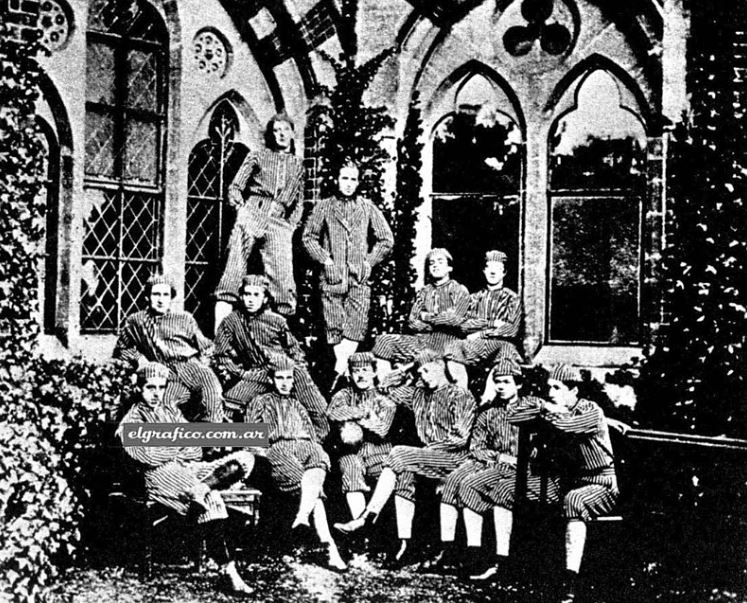Early Versions of Soccer Were Banned in England in The 1300s – Why?

According to historians, soccer originated in Britain between 700 AD and 800 AD. The game was significantly violent rather than being peaceful as it is today. During this time, soccer was a brutal game that could result in injuries and even deaths. However, the sport was widely popular among commoners. Those in positions of power and the higher class found the idea unappealing.
Origins of Soccer
The earliest known reference to the sport of soccer is from China in about 200 BC, when a game known as cuju was played, which involved kicking a leather ball. The Greeks and Romans also enjoyed a form of soccer that permitted ball carrying.
The actual soccer game originated in England, and the first ball was reportedly the head of a dead Danish brigand. Although King Edward III banned soccer because of its excessive violence and playing time interfered with archery practice, the game could not be curtailed (source).
Moreover, documentary evidence indicates that the Chinese military used a game involving kicking a ball into a small net during the Han Dynasty (206 BC - 220 AD).
The ancient Greeks and Romans played soccer-like games, although teams could have up to 27 players in early Roman versions.
The Ban
In 1314, English King Edward II banned football in London.
It is thought that a football game similar to modern soccer originated in England between 1175 and 1350, when one witness described a game in which “young men, in country sport, propel a huge ball not by throwing it into the air, but by striking and rolling it along the ground, and that not with their hands but with their feet.”
Despite efforts by the monarchy to curtail the game, citizens continued to play. With new laws, King Edward III prohibited the game even further in 1331. Over the next 100 years, King Richard II, Henry V, and Henry VI passed numerous laws to curb football’s popularity.
During the late 1300s, England was in the midst of a war with France that would last more than 100 years. Concerned that commoners were becoming too obsessed with the sport and neglecting their military training, monarchs feared they would not actively participate in the war. The game had no official name, so different names were used across the country, depending on where it was played.
Between 1331 and 1660, several monarchs banned soccer in their nations. However, fans were resilient, and the game continued to be played despite the bans. Hence, the game’s violent nature and the threat of punishment failed to stop players from loving the game.
The Lift on the Ban
In 1605, English royalty became aware that they could not stop soccer’s rise in popularity. They legalized the game and began to view it favorably. It became clear that soccer was a positive force in society because it kept children occupied instead of causing them to become involved in criminal activities.
In 1848, the rules of the game were standardized and published. They are called the Cambridge Rules, and many of these original rules are still used today.
The Standardization of Football Rules

Although the rules devised at the University of Cambridge in 1848 became standard football rules, many clubs not associated with the university or schools continued to play by their own rules. In 1862, a set of rules known as the Sheffield Rules was used by a number of clubs in the north of England.
Ebenezer Cobb Morley, born in Hull and raised in London, was responsible for drafting the first comprehensive set of rules for the game of football.
Ebenezer Cobb Morley was a keen sportsman and captain of Barnes Club when he, along with representatives from 13 other clubs, instigated a meeting at the Freemason’s Tavern in London on October 26, 1863. The formation of The Football Association led to the creation of a unified set of rules governing football matches played in England, as well as to the organization’s ultimate success in helping spread the sport around the world.
It took five more meetings at Freemasons’ Hall between October and November of 1863 for the Football Association to produce a draft set of comprehensive rules for football.
At the last meeting of the Football Association, Blackheath withdrew its representative, angered by the removal of two draft rules. The first rule would have allowed a player carrying the ball to run with it, and the other rule outlawed tripping an opponent and holding onto him.
The FA withdrew its support from Blackheath, who then went on to join with other clubs to form the Rugby Football Union. Soccer, a more common name for association football, became the preferred term to distinguish between association football and rugby football.
Meanwhile, the other eleven clubs ratified the original thirteen laws of the game. Although some northern clubs adhered to the Sheffield Rules well into the mid-1870s, the Football Association continued to modify its laws until the two games were nearly identical.
Soccer Today
Today, soccer laws are governed by the International Football Association Board, which was created in 1886 when representatives of The Football Association, the Scottish Football Association, the Football Association of Wales, and the Irish Football Association met at a meeting in Manchester.
The first international football match occurred between Scotland and England on 30th November 1872. The match was played at Hamilton Crescent in Glasgow, the home ground of the West of Scotland Cricket Club, and ended in a 0-0 draw watched by around 4,000 spectators.
The sport is played worldwide by millions of people, with billions more watching it on television.
Conclusion
Soccer is a sport of rebellion. Its players and fans love the game because it allows them to express themselves in ways they normally wouldn’t be able to. The resilience of commoners in the Middle Ages helped give birth to modern soccer.




